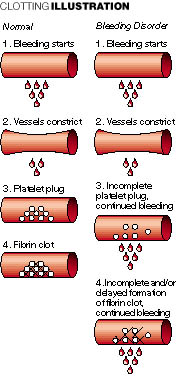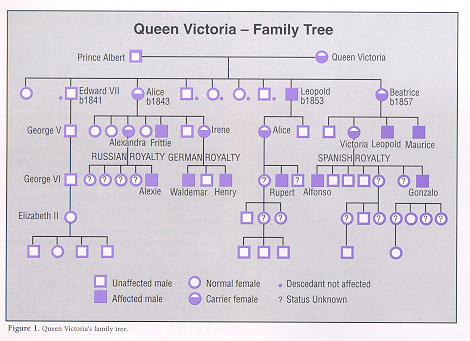HEMOPHILIA MONTH, NTL.
About Hemophilia Month
March is Hemophilia Awareness Month.
Hemophilia is a genetic blood disease that that prevents the blood from clotting normally. References to excessive and unexplained bleeding have been made since antiquity. In the Talmud, a collection of Jewish Rabbinical writings from the 2nd century AD, it was written that male babies did not have to be circumcised if two brothers had already died from the procedure.
Hemophilia has often been called the "Royal Disease." Queen Victoria of England (1837-1901) was a carrier of the hemophilia gene and subsequently passed the disease on to several royal families. Victoria’s eighth child Leopold had hemophilia and suffered from frequent hemorrhages, which were reported in the British Medical Journal in 1868.
Through the 1940, hemophiliacs rarely reached the age of 30. Changes and advancements in treatments occurred in the 1960s, but the advent of AIDS in the 1980s severely impacted the hemophiliac community, which is dependent upon blood transfusions. By the 1990s, the safety and efficacy of factor concentrates improved. Factor products became safer as tighter screening methods were implemented and advanced modes of viral inactivation were utilized. In addition, synthetic (not derived from plasma) factor products were manufactured using recombinant technologies. In 1992, the first recombinant factor VIII product was approved by the Food and Drug Administration (FDA). In 1997, the first factor IX product was granted FDA approval. Additional synthetic drugs such as desmopressin acetate (DDAVP) were also introduced to treat mild-to-moderate hemophilia A and von Willebrand disease.
By the mid 1990s prophylactic (a preventative treatment regimen) therapy in children with hemophilia became more common. Proponents argued that the implementation of prophylaxis would prevent the chronic bleeding episodes that typically characterized hemophilia. Since the advent of prophylaxis, children could look forward to a life of less pain, without the orthopedic damage associated with chronic bleeding. As a result, most children born with hemophilia in the U.S. today can look forward to long, healthy and active lives.
Hemophilia is a genetic blood disease that that prevents the blood from clotting normally. References to excessive and unexplained bleeding have been made since antiquity. In the Talmud, a collection of Jewish Rabbinical writings from the 2nd century AD, it was written that male babies did not have to be circumcised if two brothers had already died from the procedure.
Hemophilia has often been called the "Royal Disease." Queen Victoria of England (1837-1901) was a carrier of the hemophilia gene and subsequently passed the disease on to several royal families. Victoria’s eighth child Leopold had hemophilia and suffered from frequent hemorrhages, which were reported in the British Medical Journal in 1868.
Through the 1940, hemophiliacs rarely reached the age of 30. Changes and advancements in treatments occurred in the 1960s, but the advent of AIDS in the 1980s severely impacted the hemophiliac community, which is dependent upon blood transfusions. By the 1990s, the safety and efficacy of factor concentrates improved. Factor products became safer as tighter screening methods were implemented and advanced modes of viral inactivation were utilized. In addition, synthetic (not derived from plasma) factor products were manufactured using recombinant technologies. In 1992, the first recombinant factor VIII product was approved by the Food and Drug Administration (FDA). In 1997, the first factor IX product was granted FDA approval. Additional synthetic drugs such as desmopressin acetate (DDAVP) were also introduced to treat mild-to-moderate hemophilia A and von Willebrand disease.
By the mid 1990s prophylactic (a preventative treatment regimen) therapy in children with hemophilia became more common. Proponents argued that the implementation of prophylaxis would prevent the chronic bleeding episodes that typically characterized hemophilia. Since the advent of prophylaxis, children could look forward to a life of less pain, without the orthopedic damage associated with chronic bleeding. As a result, most children born with hemophilia in the U.S. today can look forward to long, healthy and active lives.
PROMOTIONAL DETAILS
Event Sponsor:
National Hemophilia Foundation
Videos
Images








